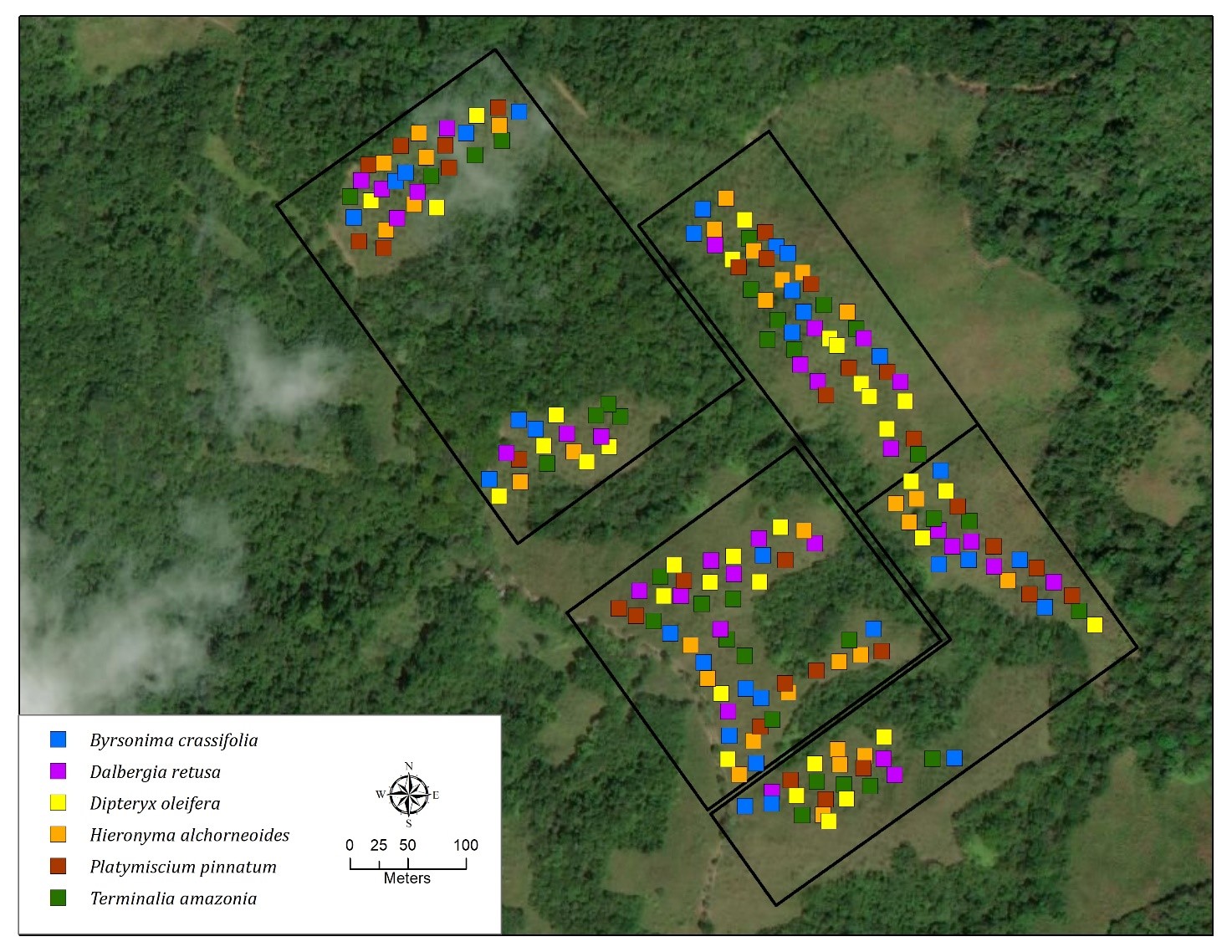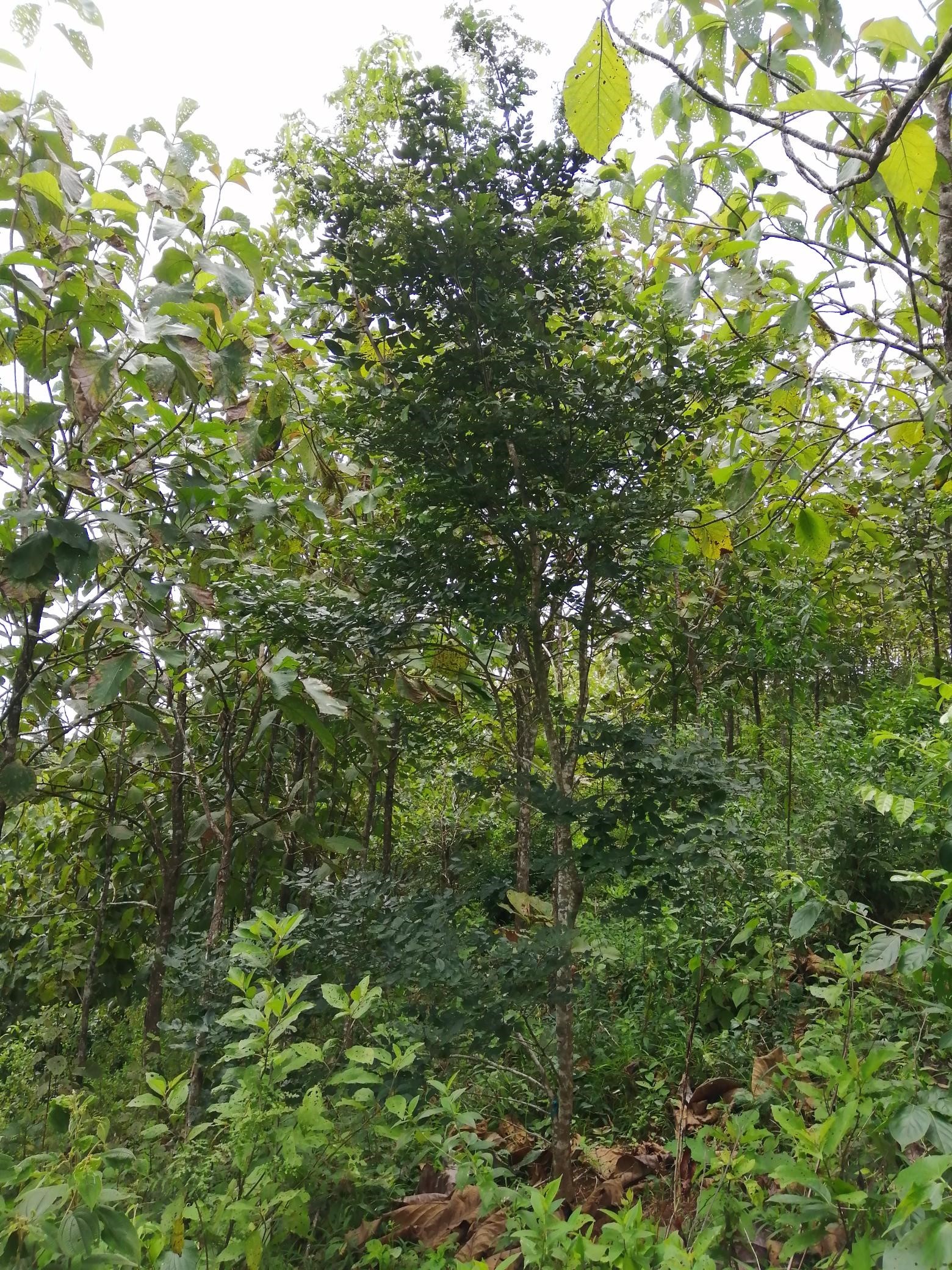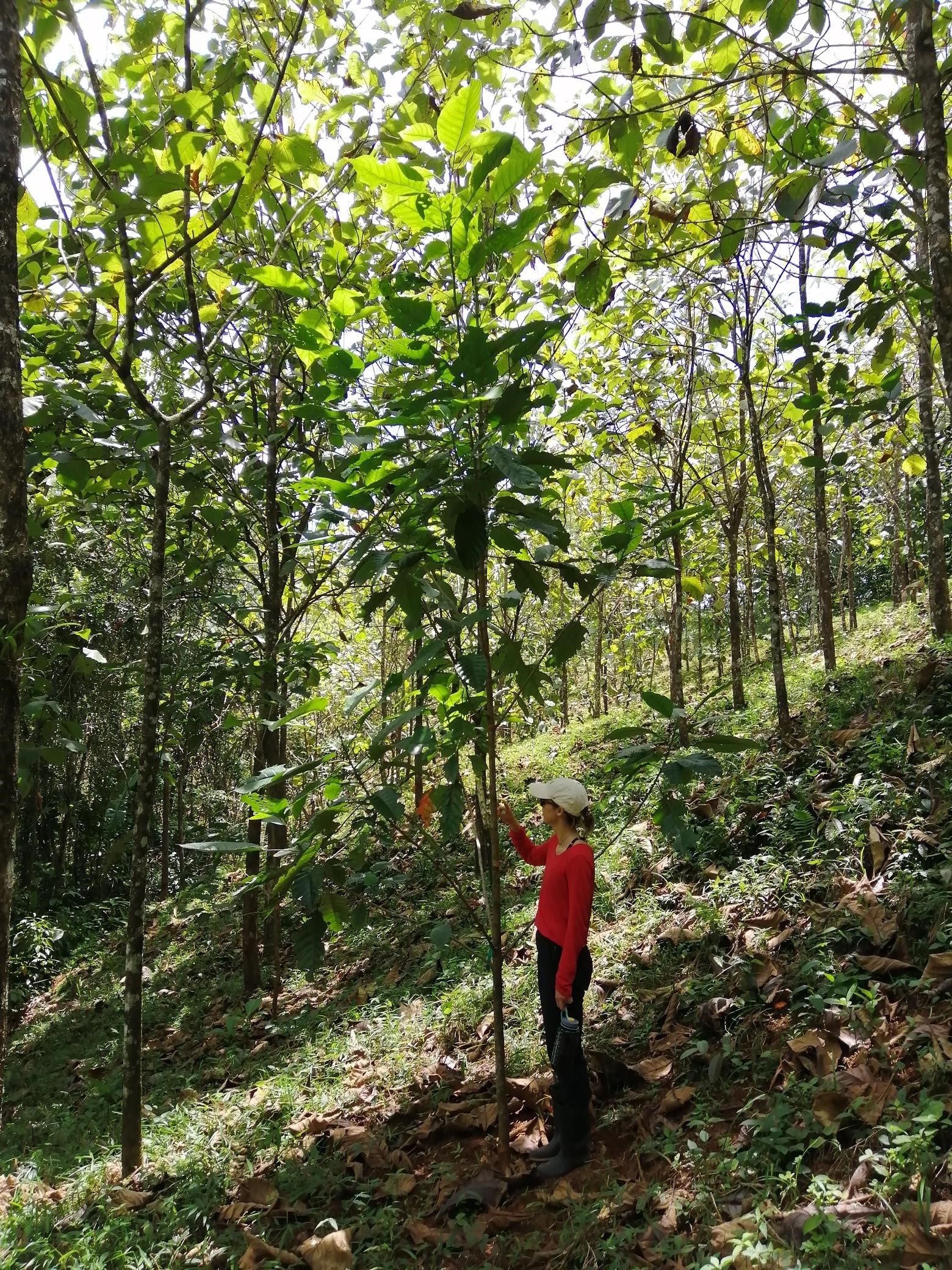Agua Salud Teak Plantation Enrichment Trials
The Agua Salud Teak plantation enrichment trials were established in 2015 and in 2016. In 2015 two species of trees were planted in to informally test if they grow well in our poorly preforming teak plantation. This represents the "art" side of forestry. Given the obvious initial success, in 2016-17 a properly replicated set of trials with additional species was initiated.
This trial is linked to the
Design
The Agua Salud Teak plantation is 30 ha. In 2015 the management objective outside of the Teak watershed was changed to test ways of returning the plantation to productivity and profitability. Two species, Terminalia amazonia and Dalbergia retusa were planted randomly into light gaps post thinning. Trees planted into 21 permeant sampling plots established to measure teak growth are monitored.
In 2016-17 five highly valuable timber species were planted into a different sector of the Teak plantations. In 2016 Dipteryx oleifera and Hieronyma alchorneoides were planted along with T. amazonia and D. retusa in blocks of 12 individuals (4 x 3 individuals with 6 meters spacing between stems) where plot location is randomized within each of four blocks in the plantation. An additional three sites are in other areas. Platymiscium pinnatum was not planted until 2017 due to lack of seedling availability in nurseries. Two treatments where individuals within plots are either fertilized or not exist. Trees in fertilized plots receive 12-24-12 N-P-K fertilizer one time per year.
 |
| Map of the Agua Salud Teak Plantation focal site enrichment trials. Trials include those begun as an informal test in 2015 (area outside and adjacent to blocks with species) and formalized trials (inside black lines) initiated in 2016. Colors represent species specific blocks of 12 individuals spaced at 6 x 6 m spacing. Each block has 8 plots of each species where 4 are fertilized and 4 are not (not distinguished in this map). Three satellite blocks also exist and are not shown. |
Site characteristics
| country | Panama |
|---|---|
| former land use | cattle pasture |
| altitude (m) | 330 |
| area (ha) | 30 |
| no of plots | 285 |
| plot size (m2) | 432 |
| no of trees planted | 3420 |
| planting date | 2015 and 2016-17 |
| diversity variables | species identity |
| diversity gradient | none | ,
| size species pool | 5 target and 1 additional species |
| species pool | Terminalia Amazonia, Dalbergia retusa, Dipteryx oleifera, Hieronyma alchorneoides, and Platymiscium pinnatum (additional species: Byrsomina crassifolia) |
| contact person | Jefferson Hall |
Research
Seventy-five percent of all trees planted in Panama are teak, Tectona grandis. Teak can thrive on fertile, loamy soils but grows poorly on low fertility, acidic, clay soils. These research trials are designed to test the growth and survivorship over time of five highly valuable timber species when planted into poorly performing teak plantations. Research undertaken in adjacent and additional sites suggests that trees of these species will grow as well or better in partial shade than in full sunlight. These trials not only test basic sivicultural characteristics and practical methodologies applicable to management but serve as a platform for further basic and applied research.
Management
Management activities are undertaken to maintain the basic layout and achieve the overall goals of the trials. This includes regular cleaning (twice a year) or elimination of the understory (through 2018 in the 2015 plantings but continuing in 2016-17 planting) and cutting climbers. Half of the 2016-17 plantings are fertilized half are not.
Extra information
For extra information you can send an e-mail to the contact person, or explore the publications:
- Marshall A, Nelson CA, Hall JS (2022) Species selection and plantation management in enrichment planting with native timber species in the Panama Canal watershed. Frontiers in Forest and Global Change - https://doi.org/10.3389/ffgc.2022.925877
- Marshall A, McLaughlin B P, Zerr C, Yanguas-Fernández E, Hall J S (2020). Early indications of success rehabilitating an underperforming teak (Tectona grandis) plantation in Panama through enrichment planting. New Forests 1-19 - https://doi.org/10.1007/s11056-020-09801-6
 |
 |
| Four-year-old Dalbergia retusa (Cocobolo, center, front with deep green leaves) planted into a 12-year-old Tectona grandis (Teak) plantation. Photo taken in 2019; teak plantation established in 2008; Cocobolo seedlings planted into it in 2015. | Three-year-old Hieronyma alchorneoides (Zapotero) planted into a 12-year-old Tectona grandis (Teak) plantation. Photo taken in 2019; teak plantation established in 2008; Zapotero seedlings planted into it in 2016. |
